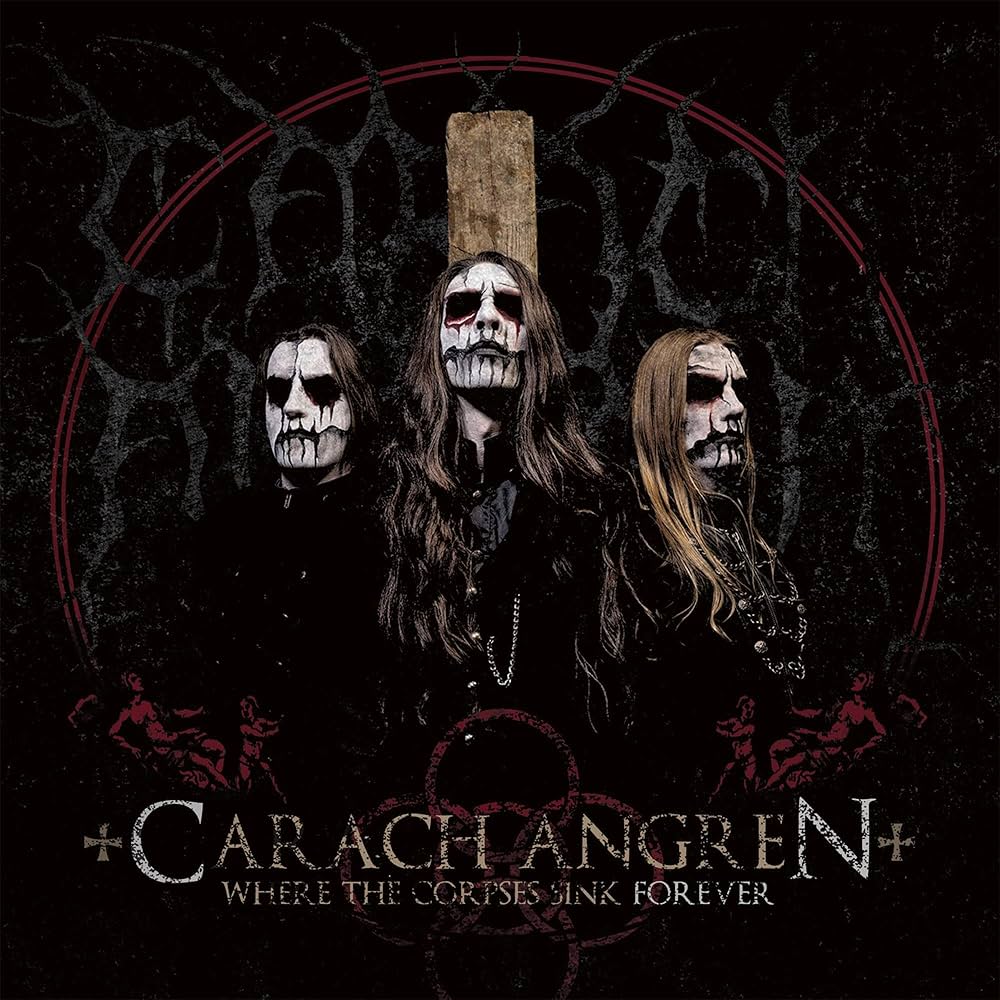Metal's notoriety is strongly connected to its offering of style variety, and that notion can find comfort in the extensive sub-genres of extreme metal. The darkened branches of black metal have summoned countless projects to formulate nests upon them and develop into refined artistry, creative works, fit for soaring among ruins.
Carach Angren, which translates to Iron Jaws, extracted their name from a fictional J. R. R. Tolkien language. Their music, however, is not limited to the tales and adventures outlined in those sagas. Cloaked in the symphonic black metal fashion, Carach Angren unmasks lyrics with the art of telling stories of horror and haunting.
The band has recorded three full lengths: Lammendam, Death Came Through a Phantom Ship, and Where the Corpses Sink Forever. The albums have remained regular patterns of orchestrated black metal and the grotesque.

2012's Where the Corpses Sink Forever continues the familiar styling of the Carach Angren. The core and richness of the album cannot be delved into without listening to the album's introduction, "An Ominous Recording". It foretells the approaching stories of seven soldiers, who, then, relay their separate happenings of doom during war. Plowing into this subject matter may grant some modernity and relativity among the band as many metal projects discuss the range of atrocities of battlefields. Nonetheless, Carach Angren focuses on the eerie, near supernatural topics to represent themselves in the sphere of heavy metal. The song that follows the introduction, "Lingering in an Imprint Haunting" has a slight delay with the vocals as it builds the gloomy musical atmosphere, which embeds the coming terror for the listener.
Pattering blast beats decorate the tracks, while enchanting symphonies and synthesizer tones give the songs the necessary advances. "The Funerary Dirge of a Violinist" is recognizable with the string incorporation as well as its story line and length.
One glitch of the album is the misalignment of the music and the events that are described within it, and it can also be detected in the impressive Lammendam and Death Came Through a Phantom Ship.
Some songs lack a "flow" with the instrumentation; music, of all genres, pleads for this consistency for a quality listening experience. While some sound effects appropriately accompany certain wordings, the stories appear to be placed without the needed care for their merging with the music. However, this ironically contributes to the experience of participating story telling.
Another low point is that there is little space for a healthy range of musical style in Where the Corpses Sink Forever because the songs are similar and seem to be too closely knit. As a result, some of the songs miss their chances to be memorable, savory works to get frequent play time.
Where the Corpses Sink Forever earns its place among reputable rhythmic, symphonic area of black metal. Its creativity may be dismissed by some who are sensitive to the ways the songs are presented as they exist without distinctive qualities. If listeners find the orchestra-like appeal to be aged, the subject matter can hold another type of timeless interest through haunting tales of war.
No comments:
Post a Comment